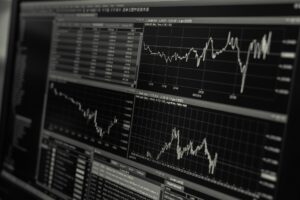Resume af teksten:
Den tyske inflation forblev uændret i november, hvilket styrker argumentet mod yderligere rentenedsættelser fra Den Europæiske Centralbank. Den nationale måling af den tyske inflation var 2,3% år-til-år, mens den europæiske målte en stigning til 2,6% år-til-år. Kerneinflationen faldt en smule til 2,7% år-til-år. Selv om priserne på fritid og serviceydelser faldt i november, forblev år-til-år-inflationen stort set uændret i de fleste kategorier. Fremtidsudsigterne for inflation viser både deflationære og inflationære påvirkninger. En stærkere euro og faldende producentpriser peger mod deflation, mens stigende prisforventninger og forventet finanspolitisk stimuli kan øge inflationen. I lyset af denne blandede inflation udsigt forventes tysk inflation at nå omkring 2% ved årets slutning, med mulighed for en stigning derefter. ECB’s møde i december er usandsynligt at blive påvirket væsentligt af disse data.
Fra ING:
Headline inflation remained unchanged in November, providing new ammunition for those at the European Central Bank arguing against further rate cuts

The path for the German economy and industry will be particularly affected by trade, the exchange rate, and fiscal stimulus moving forward
Still too high
German headline inflation, according to the national measure, remained unchanged at 2.3% year-on-year in November. The European measure increased to 2.6% YoY from 2.3% YoY in October. Core inflation dropped somewhat to 2.7% YoY, while services inflation remained unchanged at 3.5% YoY.
The available regional state data shows that prices for leisure and services actually dropped in November compared to October. Year-on-year inflation in almost all categories remained broadly unchanged.
Looking ahead, the inflation outlook has become more mixed, with both disinflationary and inflationary drivers at play. On the one hand, the stronger euro and favourable energy base effects, as well as domestic and foreign companies re-channelling products from the US to Europe at dumping prices, are all disinflationary forces. The disinflationary story is also supported by the ongoing drop in producer and import prices, normally a good leading indicator for headline inflation. On the other hand, selling price expectations in both services and manufacturing have increased again recently, and the incoming fiscal stimulus should also lead to new inflationary pressures, at least in certain sectors.
In short, due to base effects, German headline inflation should move towards 2% at the turn of the year before reaccelerating again. However, to echo the words of the ECB, German inflation risks to the outlook in both directions are higher than normal. This is why today’s inflation data will hardly have any impact on the ECB’s meeting in December. If anything, it strengthens the point of those at the ECB arguing against additional rate cuts.
Hurtige nyheder er stadig i beta-fasen, og fejl kan derfor forekomme.



